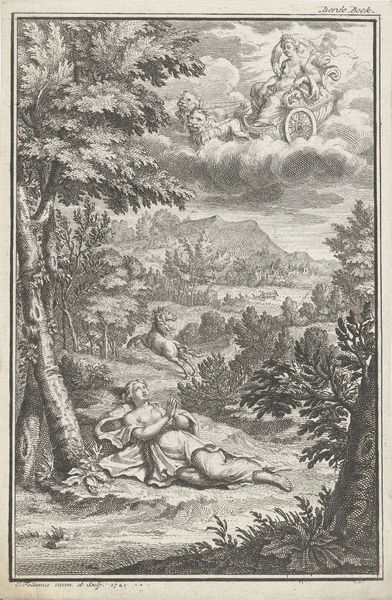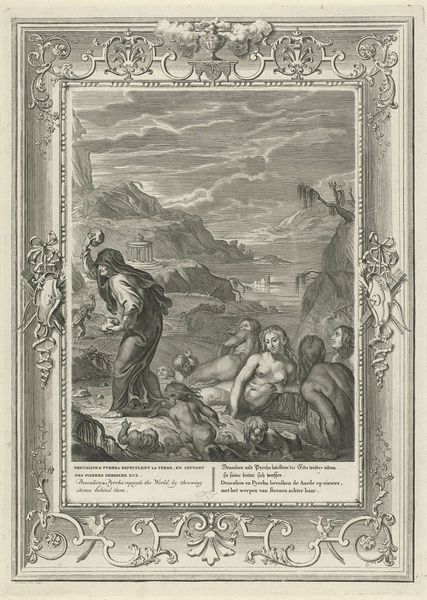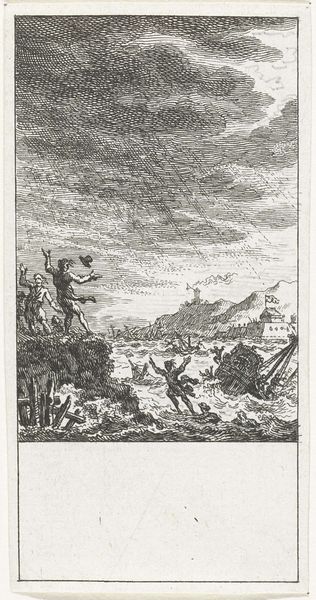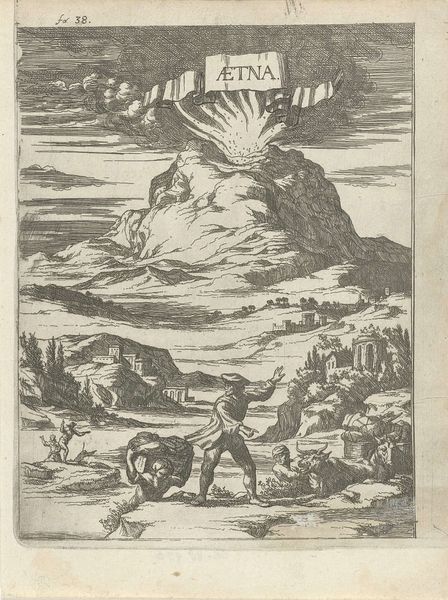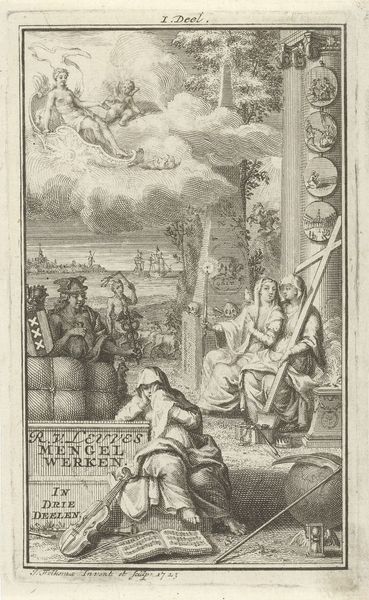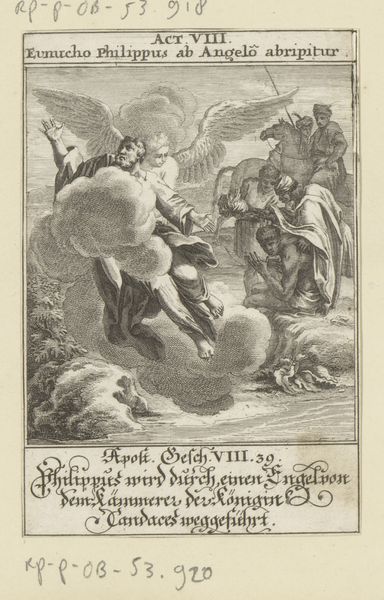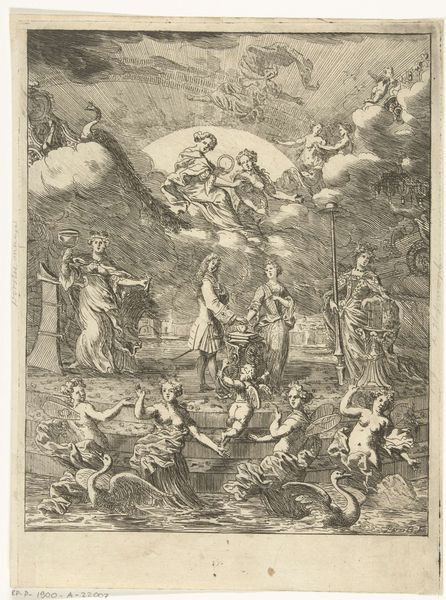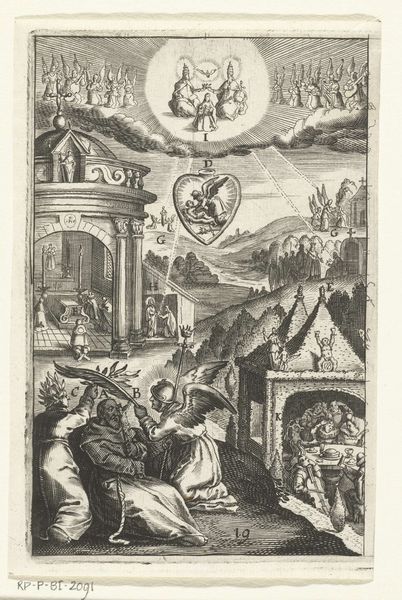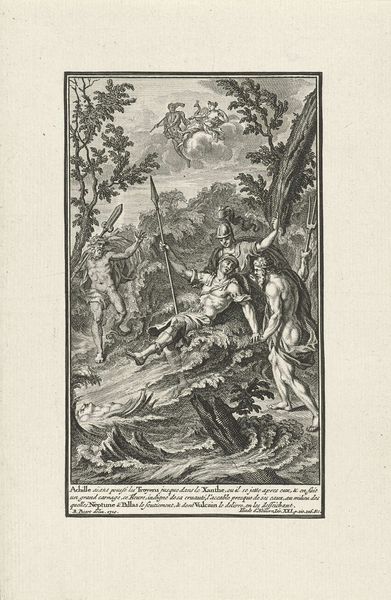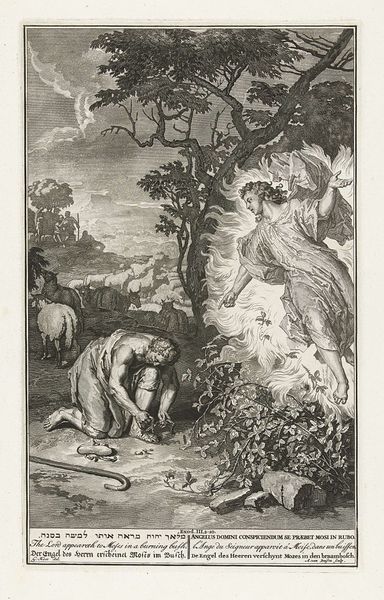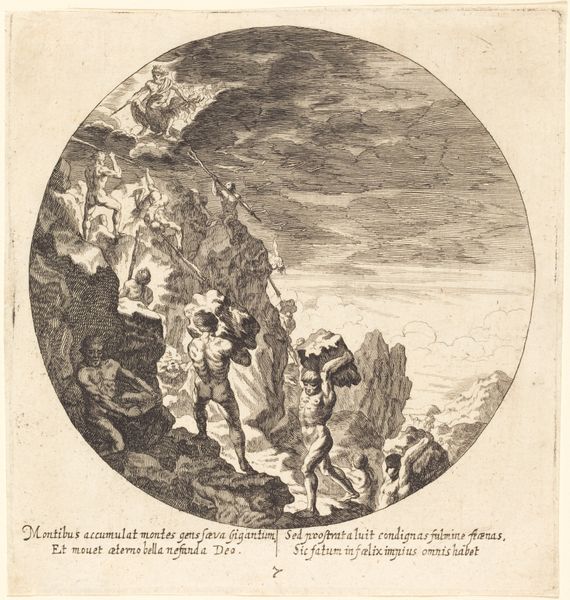
print, engraving
#
narrative-art
#
baroque
# print
#
figuration
#
line
#
history-painting
#
engraving
Dimensions: height 121 mm, width 80 mm
Copyright: Rijks Museum: Open Domain
Curator: This engraving, titled "Apostel Paulus lijdt schipbreuk bij Malta" – "The Apostle Paul Suffers Shipwreck Near Malta" – dates back to 1697. It's part of the Rijksmuseum's collection and, although signed by Anonymous, it offers a dramatic narrative. Editor: My initial feeling is one of turmoil. The frantic figures and towering waves create a sense of utter chaos and vulnerability. There's a strange blend of desperation and muted hope embedded within this scene of disaster. Curator: Absolutely. The Baroque style is evident in the dynamism and the dramatic rendering of the storm. Considering its historical context, prints like this would have served as accessible visual aids, disseminating religious stories. Prints provided access to stories about Paul to many regardless of class. Editor: It’s interesting how the figures are composed – some are clinging to the rocks, others submerged in the turbulent water. There’s this clear tension between those who might survive and those on the precipice of drowning. How much are class divisions exposed even in the face of such crisis, one wonders, as hierarchies often dictated survival during the age of sail. Curator: I agree. The representation is highly performative; it reflects a very particular and culturally defined visual rhetoric intended to convey both the danger of the situation and Paul’s faith and perceived divinely protected status. Editor: The level of detail is impressive. Note the line work defining each crest of a wave, each pleading face, it amplifies the intensity of the event. We see how individuals deal with imminent danger differently. Also the male form has the muscular build of classical sculpture in many instances. How many models from which places informed this engraving? Curator: These are excellent points. Consider this print's accessibility in the 17th century, functioning as a means to instruct moral lessons while also engaging broader social anxieties around survival and the sea. We learn so much about identity during the period by seeing who gets centered. Editor: Looking closer now, its effect on me has changed. The initial dread is supplanted by consideration. The sea does provide, and drown. The currents of identity do too. Curator: A potent and salient conclusion indeed. Thank you.
Comments
No comments
Be the first to comment and join the conversation on the ultimate creative platform.
